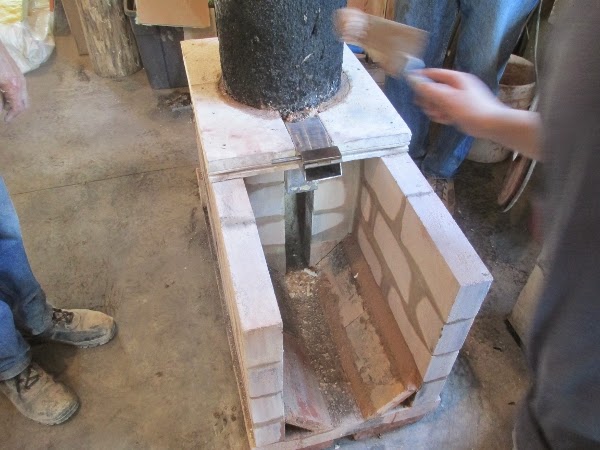We had a call this week from someone interested in a rocket stove that could burn either coal or wood fuel.
We've done some design speculation on coal before - it seems to need a lot more air, and of course it feeds differently (with a shovel or a hopper, not as long sticks).
Here are a couple of threads:
"Will Coal Work for a Rocket Stove?"
https://permies.com/t/20896/rocket-stoves/coal-work-rocket-stove#175369
and "First RMH in Mongolia"
https://permies.com/t/13385/wood-burning-stoves/RMH-Mongolia
I would be interested in trying something with Peter's batch-box designs, with a grate and adjustable air settings.

(I am currently imagining a rotating or slot-type air supply door, with settings for "Start" - "Coal" - "Wood" - "Embers" - "Finished". Could be a fun design project.)
I don't know whether the narrow port at the back would need to be tuned somehow to the new fuel, or if you could just size the grate to suggest using a smaller load of coal and stick with the same sizes for everything else. I think the goal of a heater with fewer moving parts might be more useful. If the coal is much richer, we should be able to get a comparable heat output by reducing the amount of fuel per batch, and maintain a more consistent volume of exhaust and air for a reasonably simple heater and chimney design.
Anybody got good numbers on how much air coal needs?
Percentage of water in exhaust?
Anyone with experience running a coal-fired stove where they could recommend a good, clean design for comparison?
My only experiences with coal have been blacksmithing with low-tech pan-forges, simple bellows or fans forcing air in to a central spot in the coal to generate extreme heat. Which is a very different task from producing either steady heat or a complete combustion of one entire load of coal; we'd prefer that the grate didn't melt, for example.
Yours,
Erica W

 1
1






















